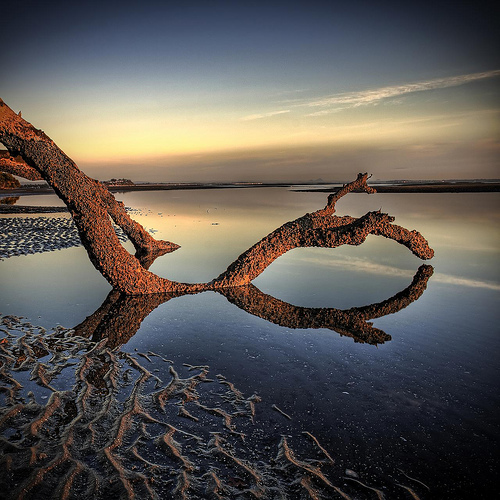
Photography is fun. It’s adventurous, interesting and artistic. But someone would rarely term it “easy”. Photography is all about paying attention to details… caring for the small things that enhance your final result. Here are eleven tips to get you started and help you take some great photographs.
-
Good Composition, Great Photographs
When you see through the view-finder or the LCD screen of your camera, paying some extra attention to the scene that is covered in the frame goes a long way making it “great”. Pay attention to how much of the scene you cover, how much you zoom-in or zoom-out, the layout and placements of the subject on the frame gives you a great composition. And if you can, try to remember a few basic composition rules and you’ll be creating wonderful works of art in no time.
-
Sharpness Contributes In Making A Photograph Great
A blurry image is rarely appealing, unless shot with some concept. Keep your images sharp. Avoid camera shake at all costs. Note this (and tell this to the kids or anyone who uses your camera): “Hold the camera still, frame the shot, hold the breath, press the shutter all down and hold it for a second before you release it”. Most of the camera shake comes from awkward pressing of the shutter-release button. Don’t forget to tell them to start breathing again ;)
-
Focus On The Subject
Digital cameras can be tricky. At times they try to be intelligent and automatically focus on background objects or elsewhere in the scene. Ensure that the focus is on the subject.
-
Use Auto Mode
At all times unless you know what you are doing, use one of the built-in auto modes to take photographs. Most of today’s DSLR’s have auto-modes for almost any situation eg. shooting landscapes, portraits, macro, night-scenes etc. Use one of the auto-modes to get the best results. Today’s cameras are quite intelligent (except for the focus part).
-
Use of Flash
If you are using one of the auto-modes, the camera takes care of the light and pops-up the flash automatically. However, flash always introduces unwanted effects and artifacts in the scene. This is especially true for night-photos wherein the subject gets a shadow-outline or the red-eye effect. Avoid using the flash as much as possible (especially the on-camera flash). If the flash pops-up automatically, try to increase the ambient light.
-
Avoid Unwanted Objects
Sometimes an unwanted object can kill the beauty and elegance of a wonderful shot. Pay attention to the entire frame and ensure that sign-boards etc. are eliminated as much as possible. Frame your perspective free of any clutter — to avoid distractions; which may come in your way to make a photograph great.
-
Shoot Interesting Subjects
While everything can be used as a subject, taking a moment to think what would make an interesting final result/photograph can be all you need to take that perfect shot. Smoke, water, lines and patterns, illusions all make a photograph interesting and draw the eye of the viewer. So, take a moment to think and then frame and shoot. Now, there may be times when you are shooting action. This rule doesn’t apply there.
-
Add Interest To Your Pictures
Sometimes photographic effects like depth-of-field and motion-blur add a beauty to the photograph. These can be a little tricky to achieve in the beginning, but practice will make you perfect. When you are shooting action, freezing the action is not the only thing you can do. Try to portray some motion by slowing down your shutter-speed. For still images, blur the background and highlight your subject.
-
Shoot The Unexplored
The human eye is drawn to the unusual. Shooting the unusual almost guarantees that your shot will draw a lot of appreciation. Try new angles and perspectives. Here are a few things you can try:
- Shoot Black and White: The eyes are not used to see in black and white. Thus black and white images draw a lot of attention and interest.
- Shoot At Night: The world looks quite different to a camera at night than it does to the human eye. Take some night shots (and try to shoot lights for a start) and get some beautiful and colorful results.
- Shoot Macro: Our eyes are not used to seeing the minuscule tiny little things all around us. So when you shoot in the tiny world you come across spiky tentacles, sharp edges, beautiful textures and insect-life. Shoot some macro and show it around. You’re sure to impress.
- Play With Camera Settings: The art of creating interesting photos lies in turning the usual into unusual and interesting. Your camera and some imagination can help you do that easily. Play with unusually fast or slow shutter speed. Try other effects like panning etc. Take a new angle — perhaps place the camera on the ground and shoot. All this will bring out some never-seen-before images.
-
Equipment
And I mention this at the last. Sometimes a lot of time is lost in searching for the right equipment and comparing cameras and lenses. You could invest this time in taking some interesting photos. At the most buy and known DSLR and you should be good to go. Today even some of the compact cameras can put the DSLRs to shame. So worry not. Just use anything decent.
-
Experience Matters (In Taking Great Shots)
Experience is what makes a photographer a professional and an artist. Don’t be disheartened with your first few shots. Try again, learn of your mistakes and improve. In no time you’ll be shooting amazing pictures. And when you do that, be sure to take a print and frame it on your study table or in your room. Take pride in your shot and do not forget to share it with us.



“Today even some of the compact cameras can put the DSLRs to shame. So worry not. Just use anything decent.” I fully agree. Some of my portraits shot with my little Sony DSC-H70 can take the wind out of the sails of my D5100 + 18-105mm…and that takes some doing ! Provided you don’t need to shoot fast, this camera is a gem. I often regret shooting (in good light) a portrait when the Sony H70 was hanging right there on my belt. See my Flickr site for a couple of much scaled down examples…one of a little kid with pink-painted cheeks, and one of an elderly gent from the icy high-altitude desert of Ladakh, seen here sporting a rather nice hat = at
http://www.flickr.com/photos/75991357@N05/6779248344/